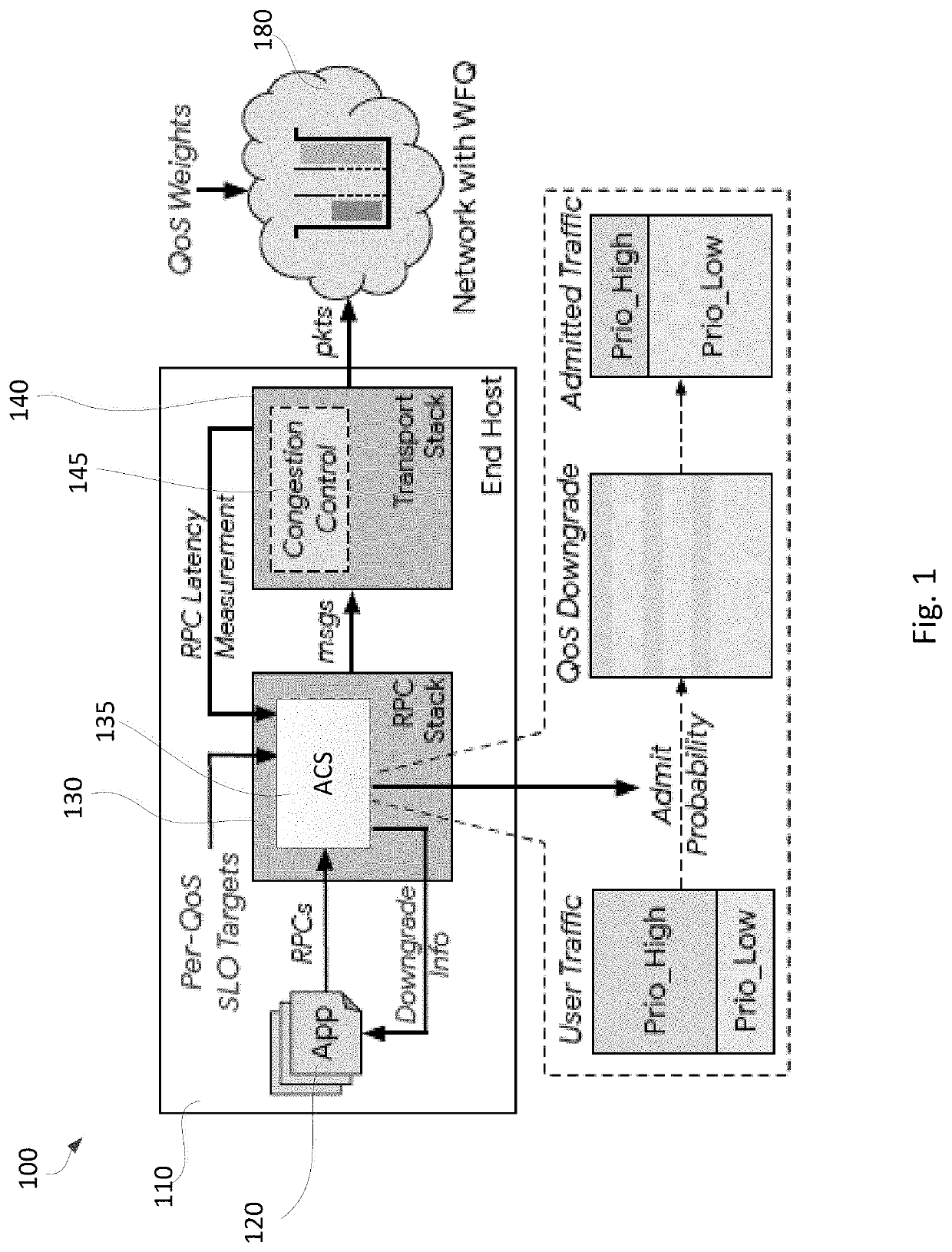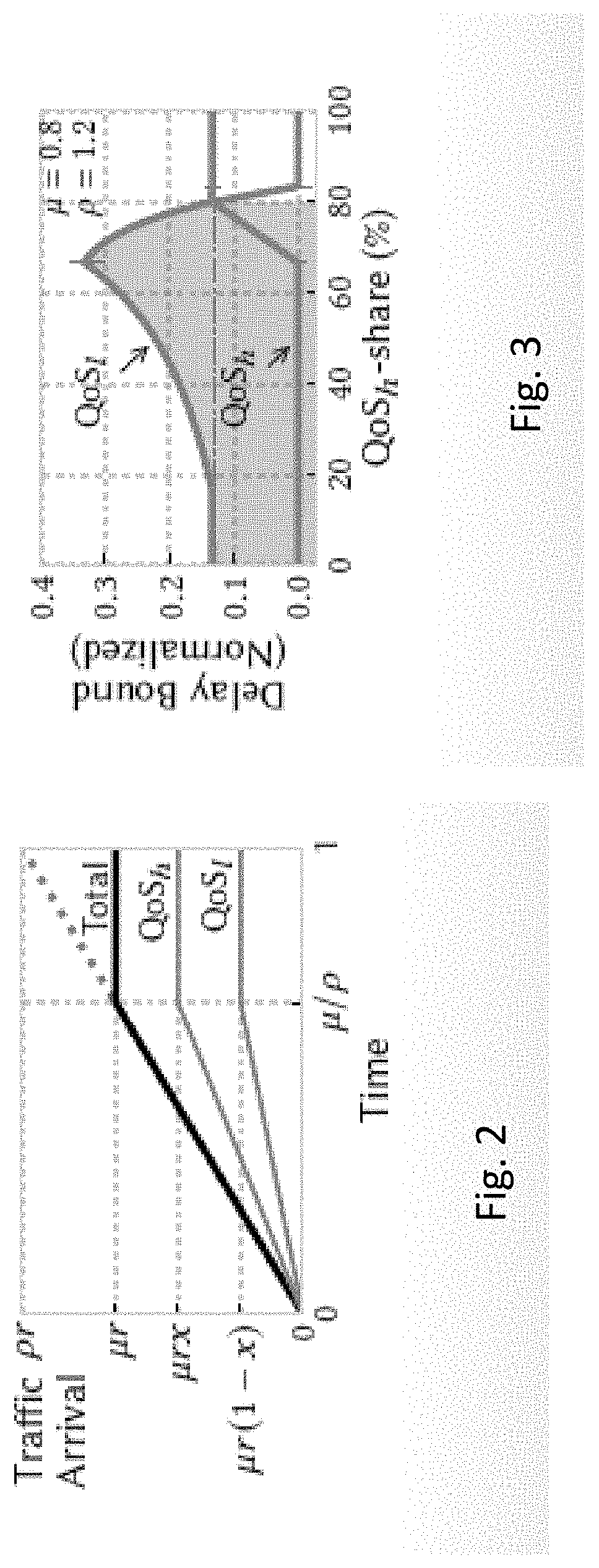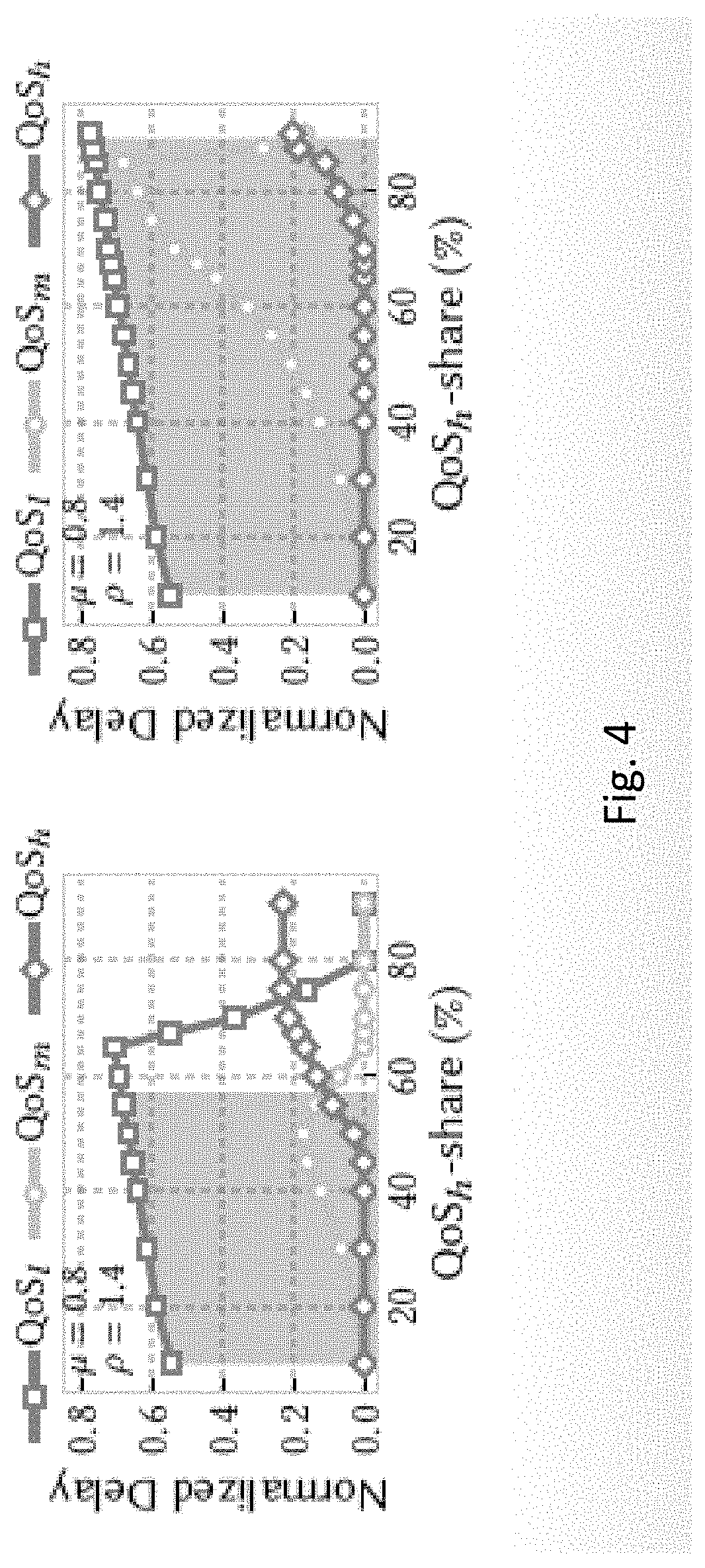Admission Control for Latency-Critical Remote Procedure Calls in Datacenters
a technology of remote procedure and datacenter, applied in the direction of transmission, electrical equipment, etc., can solve the problem that state-of-art congestion control and pfabrication cannot guarantee the meeting of network-latency slos
- Summary
- Abstract
- Description
- Claims
- Application Information
AI Technical Summary
Benefits of technology
Problems solved by technology
Method used
Image
Examples
example implementations
[0066]In one example, ACS may be implemented in a production RPC stack over Kernel / TCP. A complete RPC operation in the context of storage consists of a request followed by a response. Users desire an SLO on overall RPC latency, which depends on many factors including CPU, storage, networking and application-layer bottlenecks such as thread scheduling delays. From a networking perspective, RPC network latency (RNL) is the portion of RPC latency impacted from network overloads. Focusing on the payload-portion of the RPC, the total data transmitted in a complete RPC operation, including a request followed by a response, is dominated by the side which contains the actual payload of the RPC. A response of a READ RPC is much larger than the request (200:1 on average), and the request of a WRITE RPC is much larger than its response (400:1 on average).
RPC Network Latency
[0067]FIG. 5 shows the life of a WRITE RPC. RPC network latency is defined by t1-t0 where t0 denotes the time when the fi...
PUM
 Login to View More
Login to View More Abstract
Description
Claims
Application Information
 Login to View More
Login to View More - R&D Engineer
- R&D Manager
- IP Professional
- Industry Leading Data Capabilities
- Powerful AI technology
- Patent DNA Extraction
Browse by: Latest US Patents, China's latest patents, Technical Efficacy Thesaurus, Application Domain, Technology Topic, Popular Technical Reports.
© 2024 PatSnap. All rights reserved.Legal|Privacy policy|Modern Slavery Act Transparency Statement|Sitemap|About US| Contact US: help@patsnap.com










